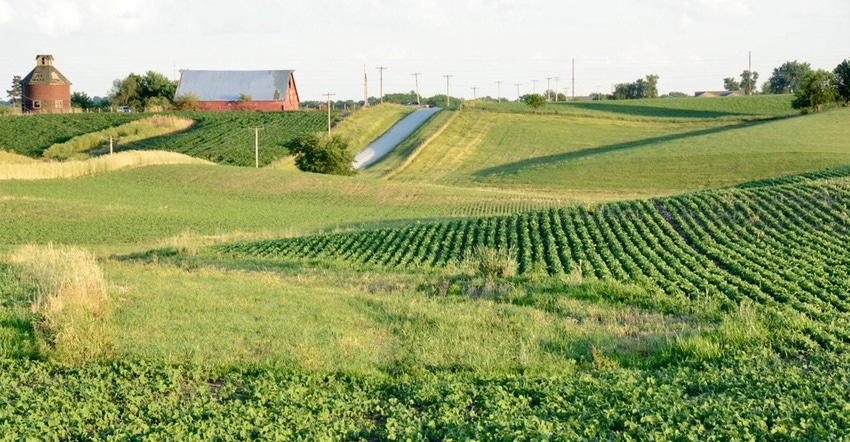August 13, 2018

Illinois’ nickname as the Prairie State is well-deserved. When early explorers ventured off the rivers and scaled the bluffs, they described seeing vast areas of grass, as far as the eye could see.
That’s where we started; so how did we get to where we are today? And what does it mean for Illinois agriculture?
Prairie made up about 60% of the Illinois landscape as recently as the early 1800s. Prairies were generally wet and inhospitable. Grass fires also made them a dangerous place to live, plus the thick mass of grass roots made farming nearly impossible.
Early Illinoisans didn’t understand the development of the Prairie State’s vegetative ecosystem. The fires that frequently swept across the glacially leveled landscape kept the grassland ecosystem in place, even though the warmer and wetter climate favored trees. You can easily see this effect, because if you abandon land anywhere in Illinois now, it will grow up into trees in a relatively short period of time. Natural firebreaks evolved in the unglaciated hills and in the flood plains along watercourses. That allowed substantial woodlands to develop fully in these areas. These woodlands were teaming with game, and there was water close by.
So, the resourceful settlers made their homes mostly in the timbered margins along watercourses or near the occasional oak savannahs, where there were trees such as the burr oak with thick bark to protect them from fire. Settlers cleared these woodlands for farmland and used the logs for homes and other buildings.
It wasn’t until 1837, when John Deere developed an improved steel moldboard plow, that Illinois residents were able to cut through that prairie sod to reveal the naturally fertile soil beneath. The plow, along with improved drainage, began to change settlement patterns across the state. But before the population began spreading out onto the prairie, the forested land area had dwindled from a starting point of 40% of the land in Illinois to less than 10%.
Manage it right
Thankfully, that percentage is slowly rising as people realize what an important resource we have in our forest lands. Wood products, including high-dollar walnuts and veneer-size oaks, can still be produced in our Illinois forests. Forests provide valuable habitat for game species such as deer and turkey, as well as nongame species. Even though we’ve seen a slight recovery, our forests remain under constant attack. Most of our large forest tracts have been cleared or severely fragmented. Invasive species such as buckthorn and bush honeysuckle crowd out valuable native species and reduce productivity and species diversity.
Whether you just have a small woodlot on your farm or still have a more substantial acreage of trees, the Natural Resources Conservation Service can help you get the most out of your forest land. NRCS offers financial assistance through the Environmental Quality Incentives Program to help you complete a Forest Management Plan. Just like a plan for your cropland, an FMP can help you inventory the existing condition of your forest land and then customize recommendations based on your objectives — whether they be board-feet or birdwatching or something in between. NRCS also has EQIP funds to help implement your FMP.
It’s a big job to make a positive impact, so we work in a partnership with the Illinois Department of Natural Resources, consulting foresters and partners such as the National Wild Turkey Federation. While we have made a little progress in improving our forest lands, we still have a long way to go.
And if you’re wondering how much of that original prairie habitat is left, there is only a fraction of 1% — but that’s another story.
Dozier is the Illinois state conservationist. Direct comments or questions to [email protected].
About the Author(s)
You May Also Like




